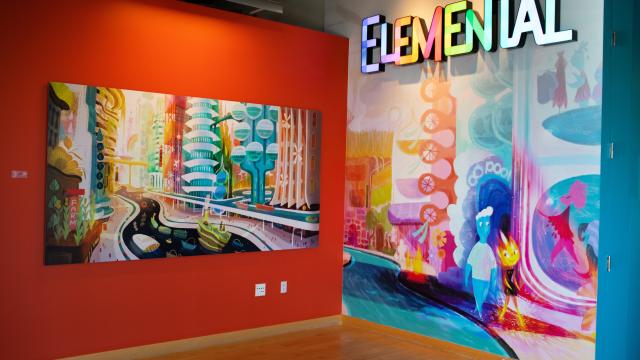Get ready for Pixar to raise the bar in animation once again, this time taking audiences into a world where earth, wind, fire, and water live like people do.
io9 recently visited Pixar Studios in Emeryville, CA, to take a tour of the campus and meet with the filmmakers behind Elemental. The latest film helmed by Peter Sohn (The Good Dinosaur) presents a meet-cute between fire and water, portrayed by Ember (Leah Lewis) and Wade (Mamoudou Athie), whose worlds collide when they fall in love and embark on an adventure to uncover how the barriers that kept them apart might be hiding a danger to their communities.
Here are 9 things you need to know about the making of Pixar’s next theatrical release. Yes, they’re finally back on the big screen and we can’t wait for this one’s big swing into another uniquely imagined, purely Pixar take on a romantic comedy.
The cultural inspiration behind Elemental
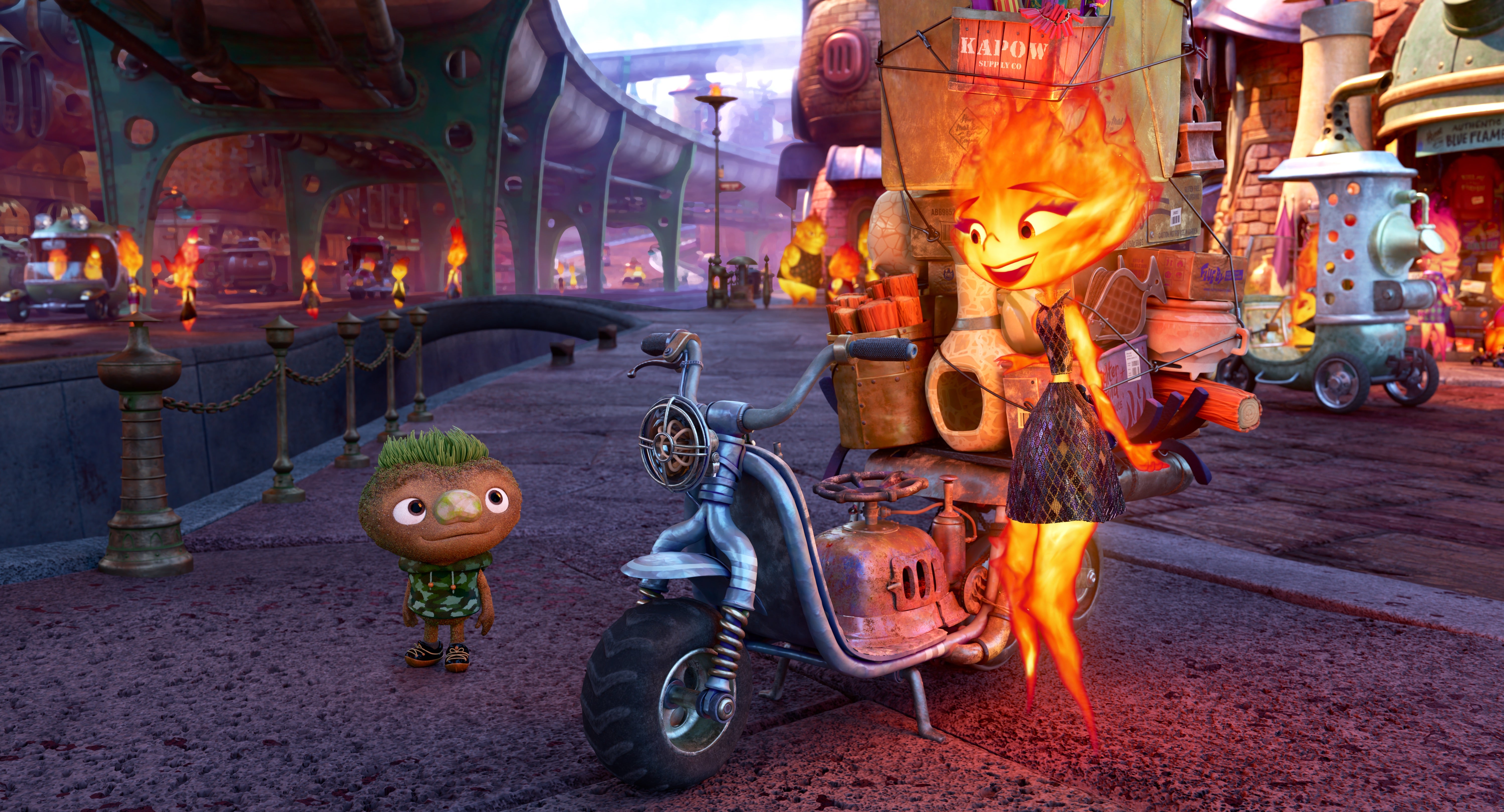
Led by director Peter Sohn, our tour began with presentations that took us behind the scenes of the film with an introduction detailing its inspirations. “It’s really a mix of three very personal parts of my life. The first one is my parents, [who] came from Korea in the late ‘60s, early ‘70s to New York. They didn’t have a lot of money. They had no family. They didn’t speak any English but they managed to create a beautiful life in the Bronx.” Sohn described how his father opened up a grocery store, which in turn opened up their world to other cultures — which in the film take the form of other elements. “I have so many memories of growing up in this town. All my dad’s customers came from everywhere — like my parents, they left their homes to come to a new land. They all were mixing into beautiful little neighbourhoods with their cultures and languages. So from that, came this [idea].”
The rom-com inspiration behind Elemental
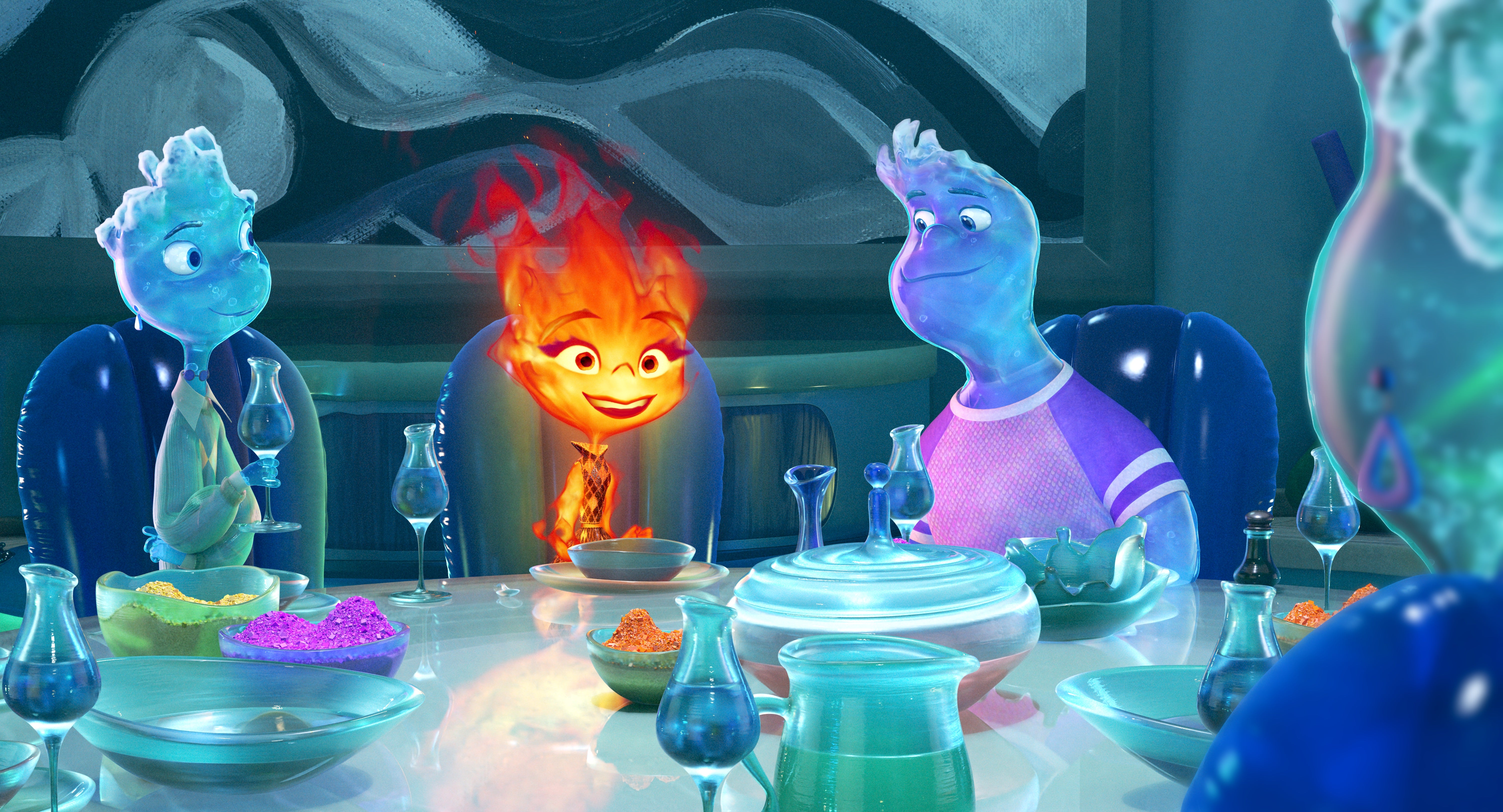
“The last little piece was my wife — this experience of marrying someone that wasn’t Korean,” Sohn said. “Growing up, my grandmother’s dying words were, like, ‘marry Korean!’ That comes from a real place that created all these sorts of culture clashes. [When] we came up into the idea of opposites attracting, fire and water, these opposites became our clear focus on the film. I wanted to tell a story for everyone who’s ever made a sacrifice for taking a risk, and set it in the hustle and bustle of a crazy city.”
It’s a story about immigrant families
“When [Peter] pitched a story about a daughter and her immigrant parents in a new community, [and] added some culture clash featuring characters made up of classical elements, I was really all in on the idea,” shared producer Denise Ream. “It presented some very intriguing visual and technical challenges that many of us were really eager to tackle. Additionally, I also did feel a personal connection to the story of my great-grandmother, Mary Teagan O’Leary, who came from Ireland to Boston all by herself, and like many of my ancestors before her, she came to America hoping to find a better life. [My dad], like Pete’s dad, worked really, incredibly hard to take care of us. And I do a job I love, largely because of the sacrifices he made for our family. As Pete and I were developing the story, we spoke to many of our coworkers about their experiences with immigration. Their accounts were really inspiring, influenced the story, and we were thrilled to see that kind of iconic history show up on the screen as we were making the movie.”
Music is key
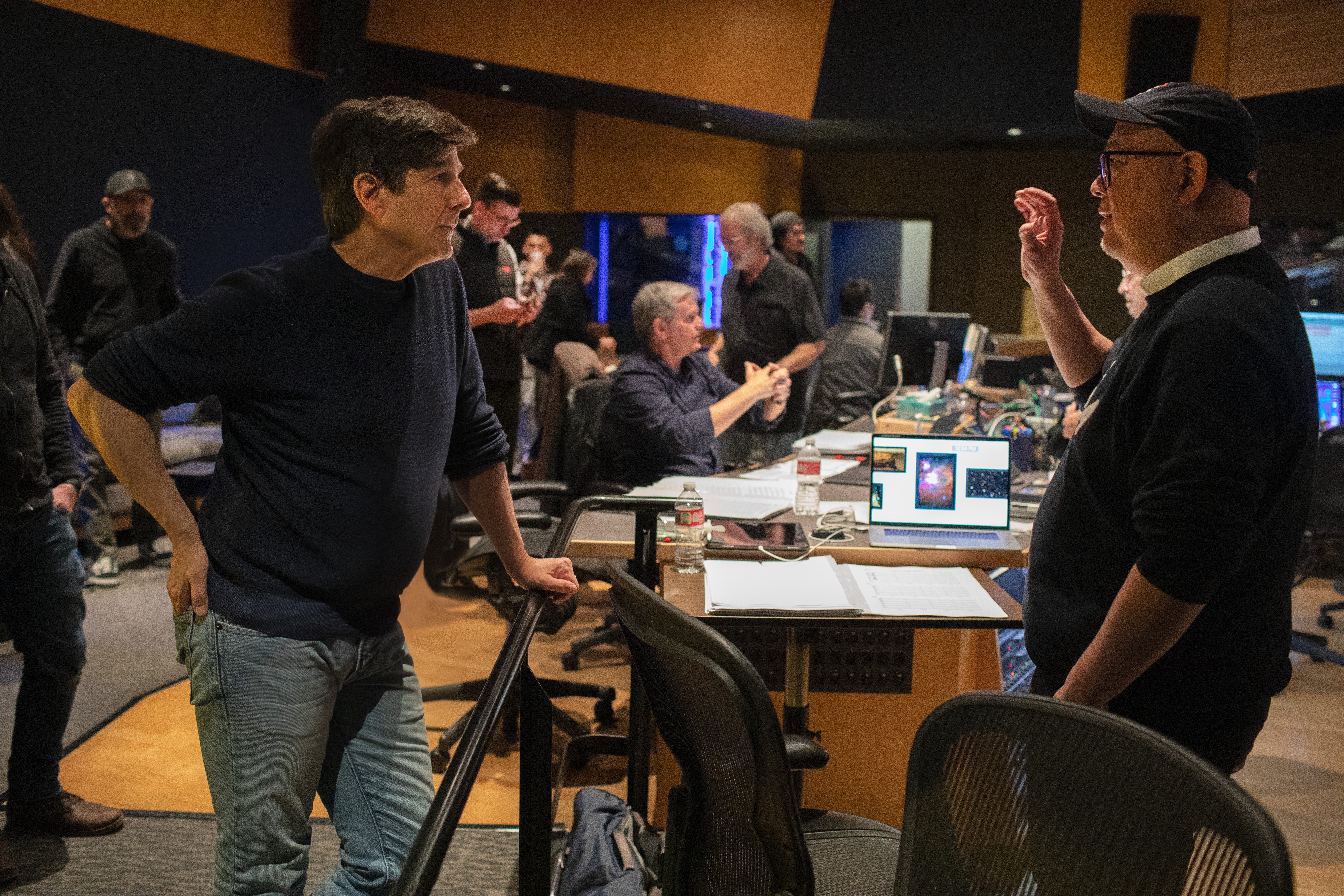
On board to score the film is the award-winning composer Thomas Newman, who previously worked on Pixar standouts Wall-E and Finding Nemo. “We knew music for Elemental would be important to support the story,” Ream shared. “So we were really thrilled when Thomas Newman signed on to the production. I love the music he wrote for us. He was inspiring to watch — a master of his craft — as he worked with the orchestra, and it was really a thrill to experience this process firsthand. He approached the music from a very thoughtful storytelling perspective and took great care in writing every cue.”
The art evolved as part of the process
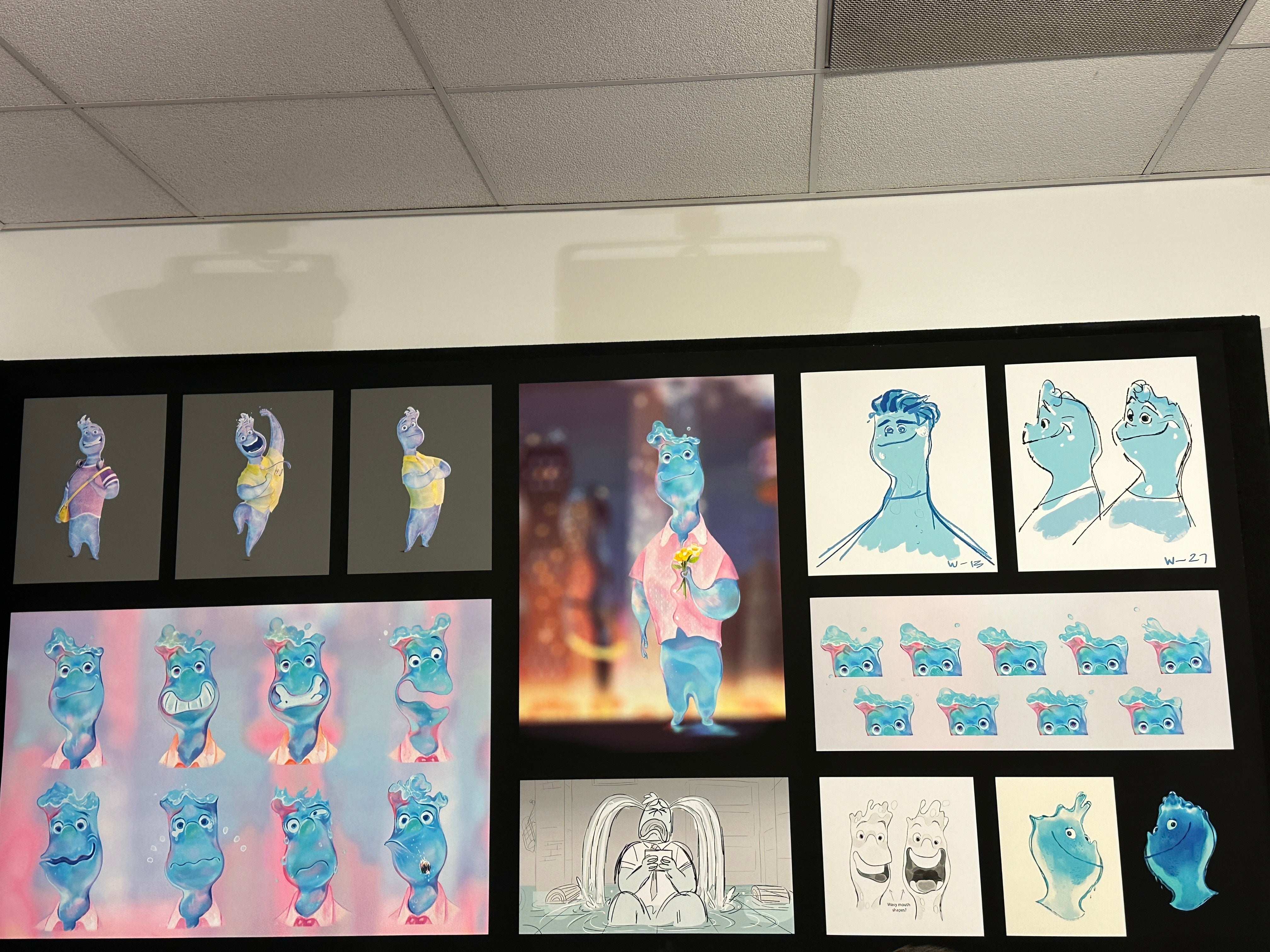
Pixar production designer Don Shank discussed how Elemental became an instance where the artists had to work a bit more unconventionally. “Elemental was entirely unique, and it required us to work backwards, if you will. Because we knew our characters are made out of elemental effects like fire and water, we needed to first figure out our characters’ look and design. And then we can create a world and a visual language that would fit these characters in a natural way,” Shank explained, detailing the visual process of creating the unique looks of characters like leads Wade and Ember. “The visual themes and goals would evolve from this point organically. So there was a lot of back and forth between our art and our technical teams, as we discovered together how to make appealing elemental characters that still felt like they had the visceral impact of real fire, water, air, and earth. After months of collaboration and exploration, we landed on our final look — a delicate balance between physics, logic, and cartoony appeal.”
The fiery characters presented a special challenge
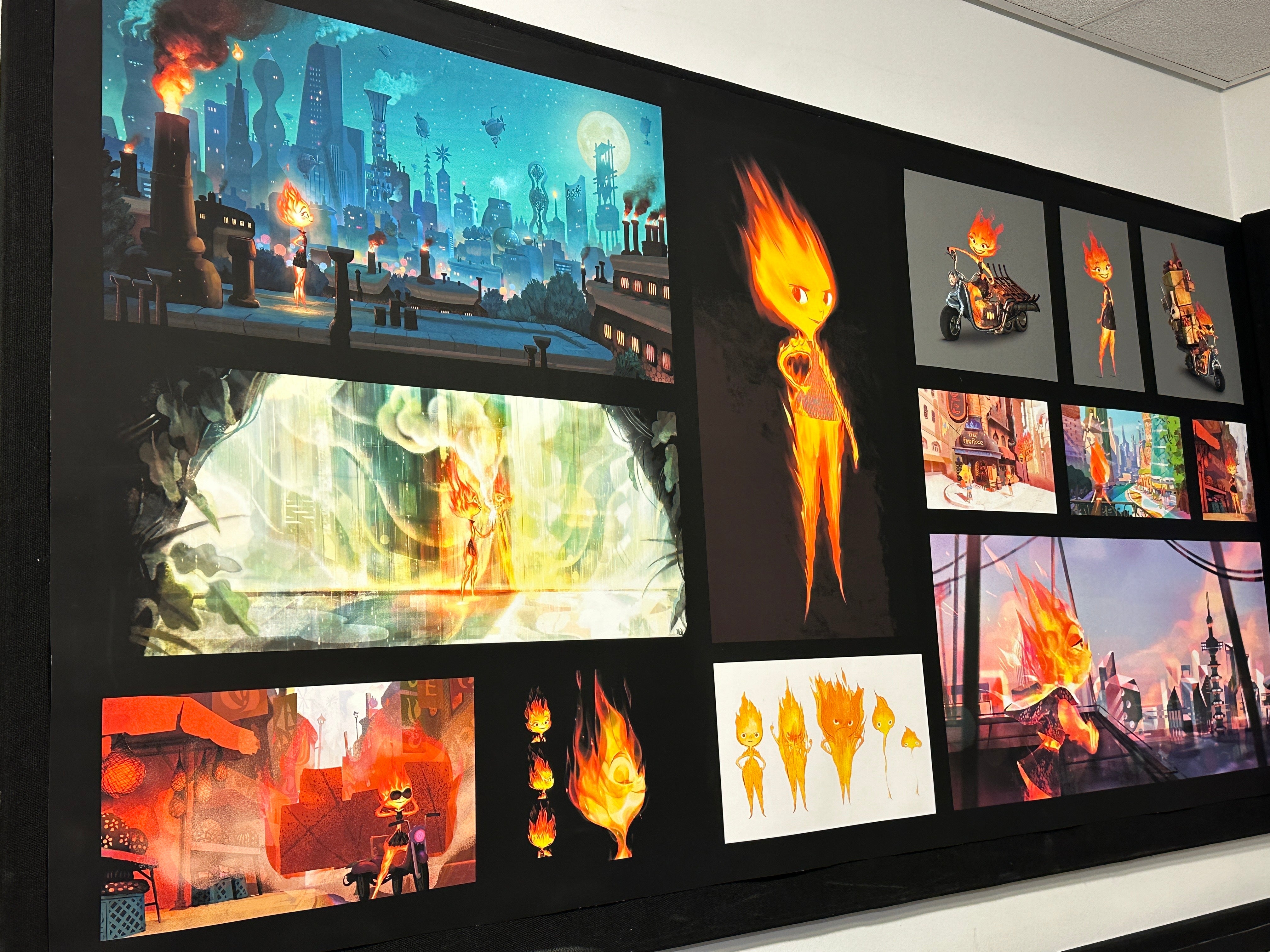
“The first challenge was to figure out what Ember would look like. We looked at photo and video reference for fire. We tried experiments. We [tried] a cartoony face on realistic fire, and it didn’t look right. We realised this had to be a balance between realism and cartoony, stylised fire, and we needed a team of experts to help us,” explained visual effects supervisor Sanjay Bakshi. “So we squeezed artists, animators, technical folks, production people in a room and asked them to make Ember in the computer. Fire is too dynamic — every three weeks, we challenged ourselves to come up with a new version of Ember. So many versions, each learning from the last and applying ideas to the next.”
There were further challenges with bringing fire and water to “life”

Jeremy Talbot, who oversees modelling and rigging, was a part of the effort to take the designs and bring them to life. “At Pixar, we do a lot of different things, but most often we try to represent flesh and bone through caricature.” he said, elaborating on the collaboration process between the film’s various teams. “As Sanjay said, [we wondered], how can we make fire and water express [emotion]? That was our biggest challenge. They’re not flesh and bone. Ember is fire. She’s not something on fire. Ember is not a piece of coal that’s on fire. She actually is fire. And if you passed her hand through her, it would behave like fire. A key characteristic of water and fire is the fact that they leave trails in many cases, [and we found it was] very important to direct and stylize [this] to enhance their performances. Ember’s fire [dims and reappears] as she leans forward; there’s a little pops in the heat of her face [that] leave behind little trails of fire, heat [and] emotion, [and the look of] how the fire fades through colour.”
It takes a unique approach to personifying hot and cold
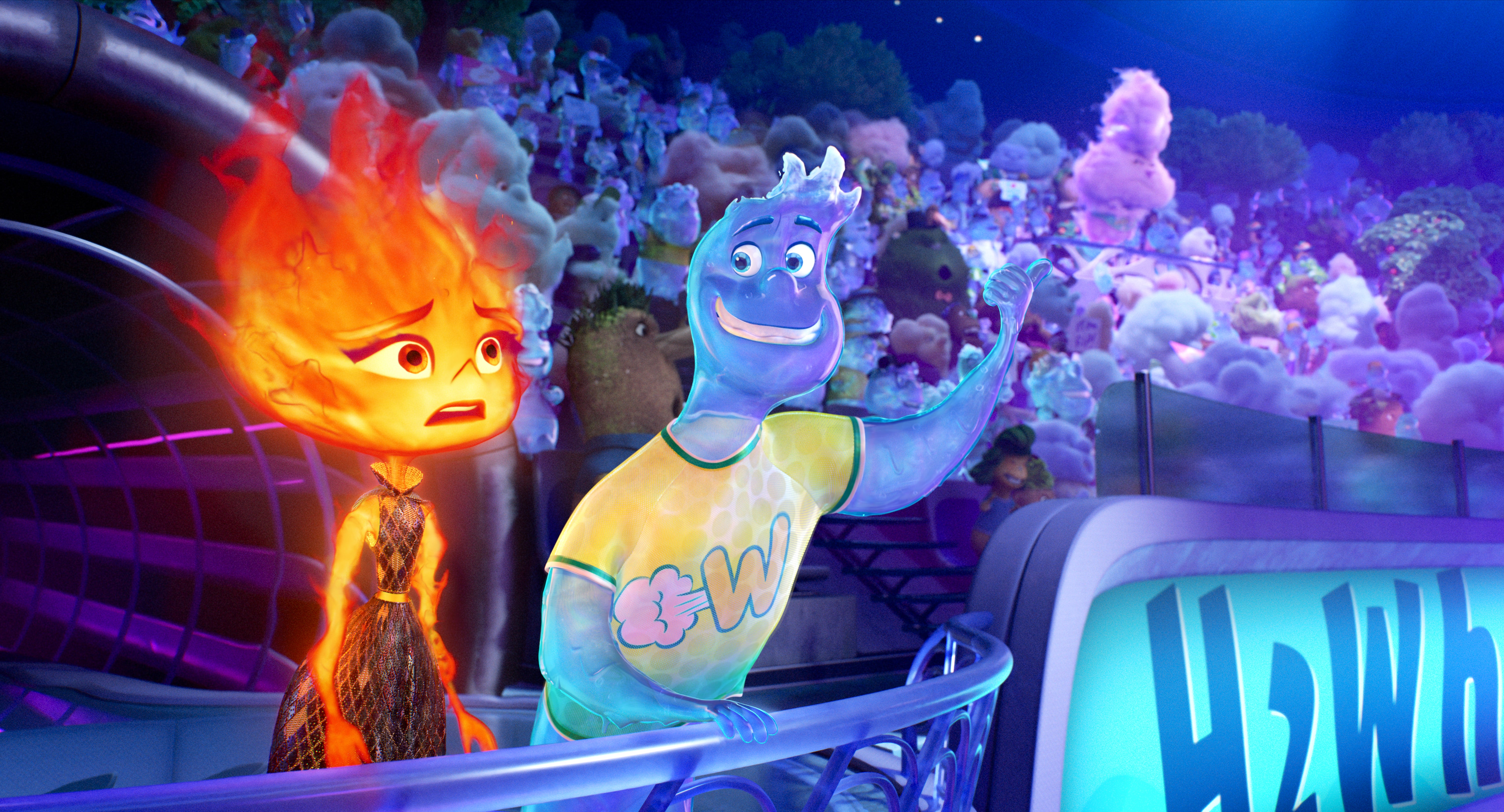
“Ember and Wade are unlike anyone we’ve ever animated before. They’re composed of organic matter with no structure, so that offers the animators so much freedom and flexibility. But we still also had to capture the subtle, thoughtful performances of these two,” shared Pixar animator Gwendolyn Enderoğlu.
Her teammate Alison Roland added, “We wanted to honour the truth to materials while also still delivering beautiful and compelling performances. The animation style we were chasing had to artfully bridge these two concepts and strike the right balance.”
The water animation aims to make a splash
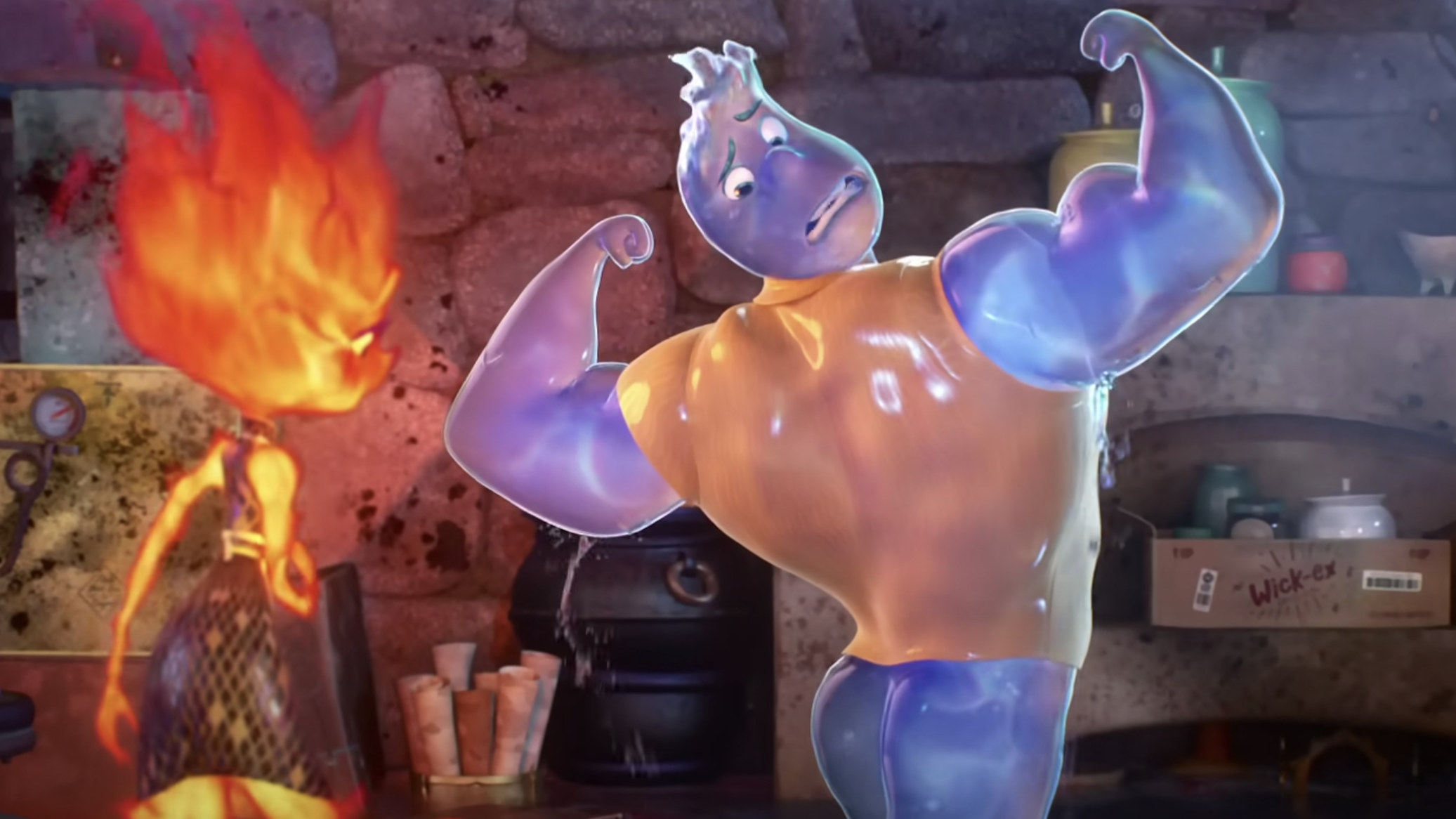
Enderoğlu continued, “We wanted each element to move in a unique way that respected their physical properties. We identified things such as weight, flexibility, and fluidity to create a different feel between the elemental characters. Fire was looser, lighter, and more gaseous, which gave Ember the freedom to change scale and volume more easily. There’s a softer, driftier quality to her motion and she has an upward drafty energy.”
Roland added, “In contrast, water is a much heavier force that retains its mass; downward gravity [makes] Wade more grounded, and it gave it lots of fun and playful opportunities for sloshy watery overlap. So as we said before, we’re not just animating a human on fire. Ember is fire and Wade is water. So this opened the door for us to think of really fun and inventive ways for our characters to move that didn’t rely on the restrictions of human anatomy.”
Elemental aims to achieve new heights for Pixar
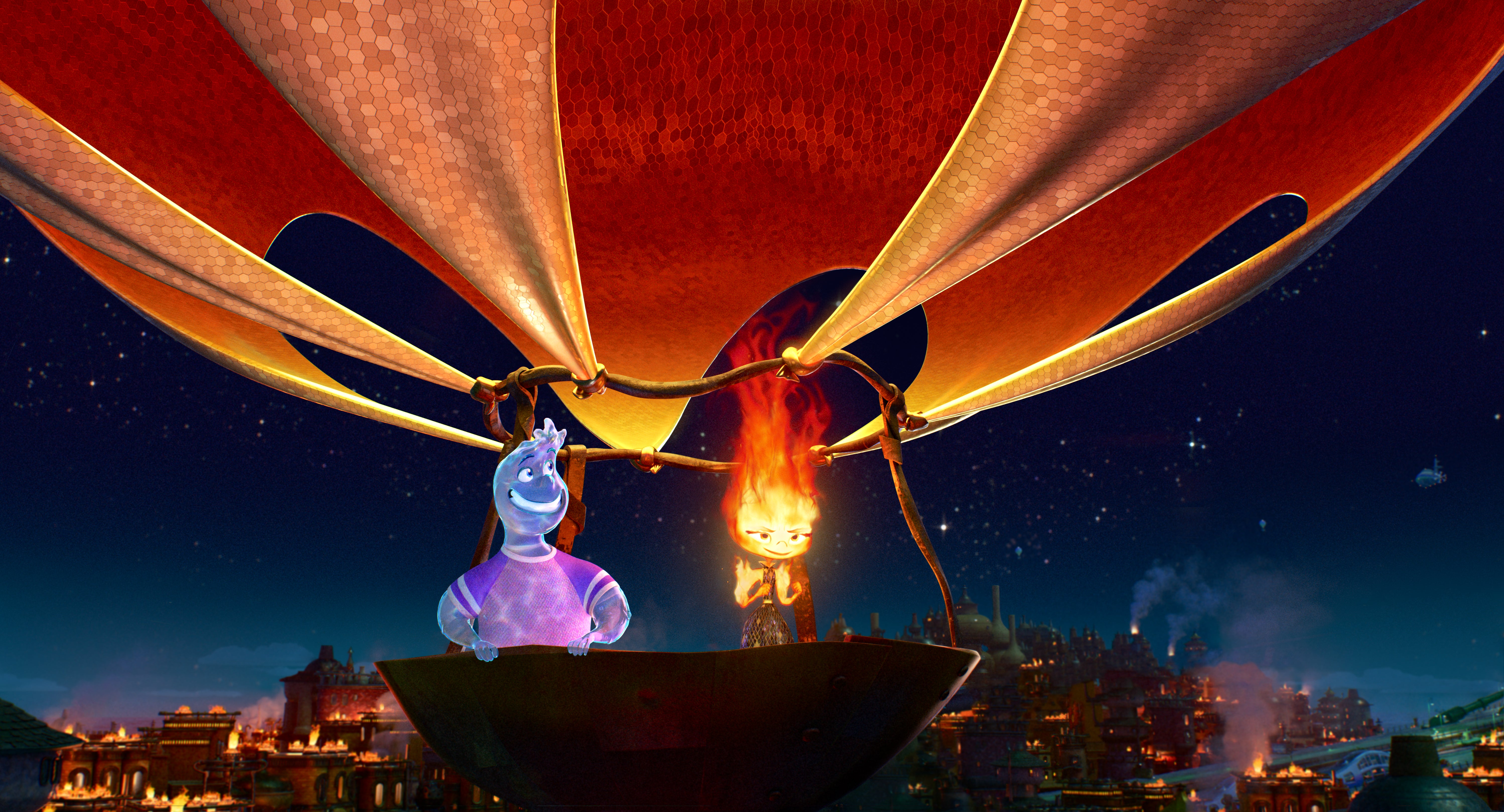
“As Pixar animators, creating emotionally truthful performances is our top priority. And on Elemental, we had a new layer to weave into these emotional performances, timing the energy of an emotion directly to the physical property of an element,” Enderoğlu said, describing how every team took inspiration from the various forms that water and fire take, from the stillness of a serene pool or a flickering flame, to a raging waterfall or explosive fire. “We referenced how real elements evoke human emotion depending on their energy. We relied on a kind of fake science to create consistency and logic for our choices throughout the film. A change in brightness could help sell the intake of oxygen for a fiery laugh. Or we could increase or reduce the speed of Ember’s flames to match her emotional energy. At first, these ideas were a little tricky for the animators, but by the end they were on fire. It was important for us to strike the right balance between the elemental emotion and the clarity of the acting so that the audience always connects with Ember and Wade.”
